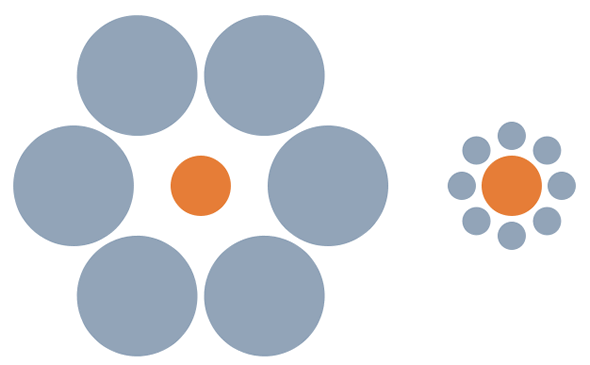An example of the Ebbinghaus illusion is where the perception of the orange circles below appears to be smaller in the left diagram than in the right diagram, when in fact the two orange circles are exactly the same size.

Even after you measured the size of the circles and have confirm and know cognitively that they are indeed the same size, your mind’s automatic perception system still cannot help but see the left circle as being smaller. The best that you can do is to be aware that in certain situations your perceptions can be fooled. This way, the next time you and encounter such a similar situation, your conscious mind can alert you to not trust your perception due to the fact that what you are seeing may be flawed.
There are many other visual and cognitive illusions in which our minds can be fooled. By being aware of the types of illusions will help us be aware of situations in which our minds can be fooled. The book
The Ebbinghaus illusion was named after the German psychologist Hermann Ebbinghaus who discovered it. The illusion is also called the Titchener circles.